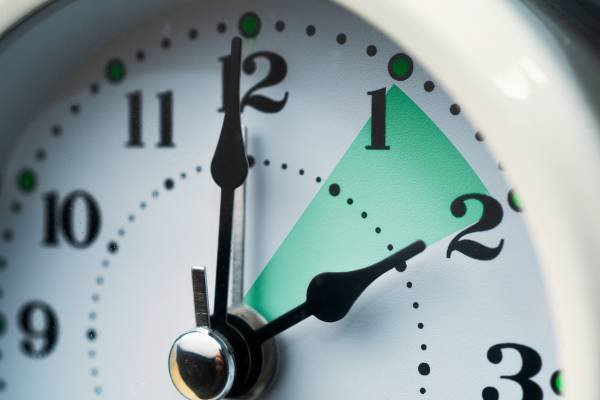”When do the clocks go forward?” This question signals the arrival of Daylight Saving Time (DST), a practice embraced by many countries to make better use of daylight during the longer days of spring and summer. As we approach the change, understanding when and why we adjust our clocks is crucial. This guide will delve into the history, purpose, and benefits of DST, offering tips to ease the transition. Whether you’re looking to stay punctual, maximize daylight, or simply stay informed, knowing the specifics of when the clocks go forward ensures you’re well-prepared for this annual shift. Stay tuned to keep your schedule in sync and make the most of the brighter days ahead.
History of Daylight Saving Time
Daylight Saving Time (DST) has a fascinating history, tracing its origins back to Benjamin Franklin’s idea in 1784 to save candles. Officially, DST was first implemented during World War I by Germany in 1916 to conserve fuel. The concept quickly spread to other countries. The U.S. adopted DST in 1918, though it wasn’t consistent nationwide until the Uniform Time Act of 1966. Over the years, DST has seen various changes, including the 2007 extension under the Energy Policy Act of 2005. These milestones highlight DST’s evolution as a strategy to maximize daylight hours, conserve energy, and adapt to changing societal needs.
Purpose and Benefits of DST
Discover the essence of daylight saving time (DST). By adjusting our clocks forward, we harness extended daylight hours, fostering energy conservation. Embracing this practice impacts daily routines positively, affording extra daylight for outdoor activities and leisure. Moreover, DST yields substantial economic and societal benefits. Businesses experience increased productivity due to extended daylight hours, while reduced energy consumption benefits the environment. Societally, communities flourish as outdoor recreational opportunities expand, promoting healthier lifestyles. Understanding the purpose and benefits of DST illuminates its significance in our lives, aligning us with the natural rhythm of the seasons.
When do clocks go forward?

“When do the clocks go forward?” marks the impending arrival of Daylight Saving Time (DST), a global practice aimed at maximizing daylight during spring and summer. The specific date and time for this change vary across regions like the US and Europe, impacting schedules and daily routines. Understanding these differences ensures smooth transitions and helps individuals stay punctual and organized. Whether you’re preparing for an earlier sunrise or adjusting your daily activities, knowing when the clocks go forward is essential. Stay informed to make the most of the longer days and enjoy the benefits of DST in your region.
How to Prepare for the Change
Preparing for the clocks to spring forward is essential for staying on track with your schedule. Here are some valuable tips to help you adjust seamlessly. Firstly, plan ahead by gradually shifting your bedtime and waking hours in the days leading up to the time change. Additionally, don’t forget to update all your clocks and electronic devices to reflect the new time accurately. This simple step ensures that you won’t be caught off guard by any discrepancies in your schedule. By taking these proactive measures, you can smoothly transition into the daylight-saving time period and make the most of the extended daylight hours ahead.
Impact on Health and Well-being
When clocks spring forward, it’s not just about adjusting time; it’s about adapting our bodies to a new rhythm. This shift can disrupt sleep patterns, leading to fatigue and decreased productivity. To mitigate these effects, consider implementing simple strategies. Gradually adjust your sleep schedule in the days leading up to the time change. Create a calming bedtime routine and ensure your sleep environment is conducive to rest. Limit caffeine and screen time before bed to promote better sleep quality. By prioritizing your well-being and implementing these strategies, you can minimize the negative impacts of the clock change on your health.
Controversies and Criticisms of DST
Controversies and criticisms of DST often revolve around common arguments against the practice. Critics argue that the biannual time changes disrupt sleep patterns and lead to increased stress and fatigue. Additionally, some experts question the purported energy savings associated with DST, citing inconsistent or negligible results in various studies. Moreover, concerns have been raised about the potential adverse effects on public health, particularly those related to mental well-being and productivity. While proponents argue for the economic and societal benefits of DST, these criticisms highlight the need for further research and discussion to assess its true impact on individuals and communities.
Global Perspectives on DST
The question of “When do the clocks go forward?” prompts a reflection on global attitudes toward daylight saving time (DST). While some countries eagerly embrace DST to maximize daylight and energy efficiency, others opt out due to minimal energy savings or disruptions to daily routines. Cultural attitudes within DST-observing regions also vary, highlighting diverse approaches to time and daylight management worldwide. Understanding these perspectives illuminates the complex dynamics shaping time transitions and societal rhythms across different parts of the globe.
Future of Daylight Saving Time

In the realm of Daylight Saving Time (DST), discussions and proposals swirl regarding its future. Advocates and critics alike ponder reform or abolition, aiming to optimize societal rhythms and energy consumption. Potential changes loom, each carrying profound implications for global schedules and habits. From adjusting work hours to recalibrating sleep patterns, the fate of DST holds significant sway over daily life. As stakeholders weigh the pros and cons, the dialogue surrounding DST’s evolution intensifies, pointing towards a potential reshaping of how we synchronize with the sun. Stay tuned as the future of clock adjustments unfolds, ushering in potential shifts in our temporal landscape.
Conclusion
In conclusion, the question “When do the clocks go forward?” serves as a pivotal reminder of the cyclical nature of daylight saving time (DST). As we navigate the shifts in time, it becomes evident that DST plays a crucial role in optimizing daylight hours and enhancing energy efficiency. By understanding the significance and timing of these clock adjustments, individuals can better prepare for the transition, ensuring minimal disruption to their daily routines. As discussions continue regarding the future of DST, it remains imperative to stay informed and adaptable. Embracing the changes in our temporal landscape enables us to make the most of extended daylight and usher in brighter days ahead. Stay tuned for updates and insights as we synchronize our clocks with the rhythms of the sun.
